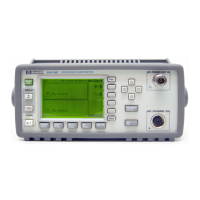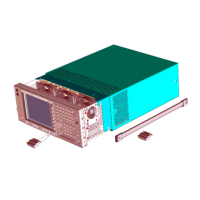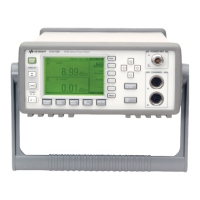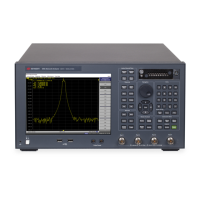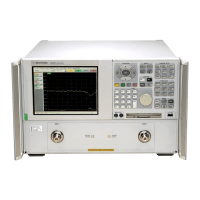Chapter 1 21
Introduction and Measurement Theory
Cable Impedance and Structural Return Loss Measurement Theory
Derivation of L. In Equation 10, L is the cable loss for a 1/2 wavelength length of
cable, expressed in linear.
1. Find the cable loss from a spec sheet. Cable loss is typically expressed in loss
per foot.
2. Convert loss per foot to loss per meter.
3. Find the 1/2 wavelength in meters. This will be the spacing between bumps.
4. Multiply loss per meter × 1/2 wavelength to get dB loss per bump.
5. Convert dB loss per bump to linear.
Example.
1. A spec sheet states that the cable loss spec at 300 MHz is 1 dB per 100 feet.
2. Convert loss per foot to loss per meter:
1 dB/100 ft ≈ 1 dB/30 m ≈ 0.033 dB/m
This is the Loss (dB)/m column in Table 1-1.
3. Find the 1/2 wavelength in meters:
1/2 wavelength at 300 MHz ≈ 0.5 meters
This is the Spacing (λ/2)m column in Table 1-1.
4. Multiply loss/meter × 1/2 wavelength:
0.033dB/meter × 0.5 meters = 0.0165 dB = L
dB
This is the dB/bump column in Table 1-1.
5. Convert L
dB
(loss) in dB to linear:
20 log (L
dB
) = −0.0165 L = 10
(−0.016/20)
= 0.998
6. L
2
/(1 − L
2
) ≈ 262
7. There are approximately 262 bumps contributing to SRL at 300 MHz.
8. 262 × 0.5 = 131. The distance into the cable for 262 bumps is 131 meters.
In actual cables, the reflections from the bumps and the spacing of the bumps may
vary widely. The best case for a minimum SRL, is that the bumps are totally random
and very small. Real world examples are somewhere in between the uniform bumps
and the scattered case. As the sizes of the bumps, their spacing, and the number of
bumps vary within the manufacturing process, varying amounts of SRL are
observed.
